Astronomical events for the month of December 2023
In the last month of the year, we can take a moment to remember some astronomical experiences that we had the opportunity to enjoy, a couple of comets, an annular eclipse of the Sun, the best meteor showers, the delights of the Moon and a diversity of incredible objects celestial To close this 2023 with a flourish, we present the winter solstice entry, we will remember how order was achieved in the Galaxy, we will have the last meteor showers of the year, the phases of the Moon and the challenge of the month with the incredible cluster M 41.
Winter Solstice: "the Sun stands still"
The solstices occur when the Earth's axis of rotation registers its maximum inclination, 23.5°, with respect to the ecliptic, that is, the plane on which the Earth revolves around the Sun. This causes the longest day or the longest night, depending on the hemisphere in which the observer is located. Thus, it is observed that while in the northern hemisphere it is the winter solstice (longest night), in the southern hemisphere there is the summer solstice (longest day) and vice versa, when in the northern hemisphere it is the summer solstice ( longest day), in the southern hemisphere it will be winter solstice (longest night).
This year, for the northern hemisphere, the winter solstice will be on December 21 at 9:27 p.m., central Mexico time; In terms of Universal Time, winter will be entering on December 22 at 03:27 hours.
May the Force be with you!
In a galaxy very, very… nearby, chaos and disorder reigned until the order of the Master “Harvard Calculators” arose and the fight began to bring order to the Galaxy and the universe. A true connoisseur of these arts was Annie J. Cannon (1863-1941) who trained at Wellesley College, where she studied physics. In 1894, she began as a Junior Professor of Physics while studying astronomy, specializing in spectroscopy and photography at Radcliffe Women's College, Harvard; This allowed him access to the Harvard University Observatory. Later, in 1896, she was hired by William Pickering of the Harvard College Observatory, joining the order of "the Harvard Calculators" to perform astronomical calculations, data reduction and spectral classification, a task first entrusted to Nettie Farrar, followed by Williamina Fleming and Antonia Maury. The classification consisted of 22 spectral classes, with letters in alphabetical order. Annie rearranged the sequence as follows: O, B, A, F, G, K, M, whose mnemonic "Oh Be A Fine Girl -- Kiss Me," is the most famous in astronomy to remember this classification. With this , Master Annie Jump Cannon brought some order to the Galaxy and the universe.
The stars studied, which exceed 250,000, were collected in the Draper Catalog, which currently has more than 400,000 objects. Annie also made a catalog of 300 variable stars and received many "first" titles: Honorary Doctorate at Oxford, first woman in the American Astronomical Society, etc., and was responsible for the astronomical photographic collection of Harvard College Observatory, in 1911, but She was only appointed regular professor of astronomy until 1938.
Did you know that in the town of Santa María Tonantzintla, Puebla, there is a street named after her?

The Phoenix burns and is reborn from its own ashes
The Phoenix Bird, or simply Phoenix, is a fantastic mythological creature that has been considered a symbol of death and resurrection; It is generally said that, every 500 years, she is enveloped in flames, to be reborn from her own ashes.
The Phoenix constellation will host the Phoenicidal meteor shower, which will be active from November 28 to December 9, with the maximum during the first part of the night of December 2, observing a maximum rate of 7 meteors per hour, in the direction of the southern part of the celestial sphere. The celestial object responsible for causing this shower has been identified as comet 289P/Blanpain.
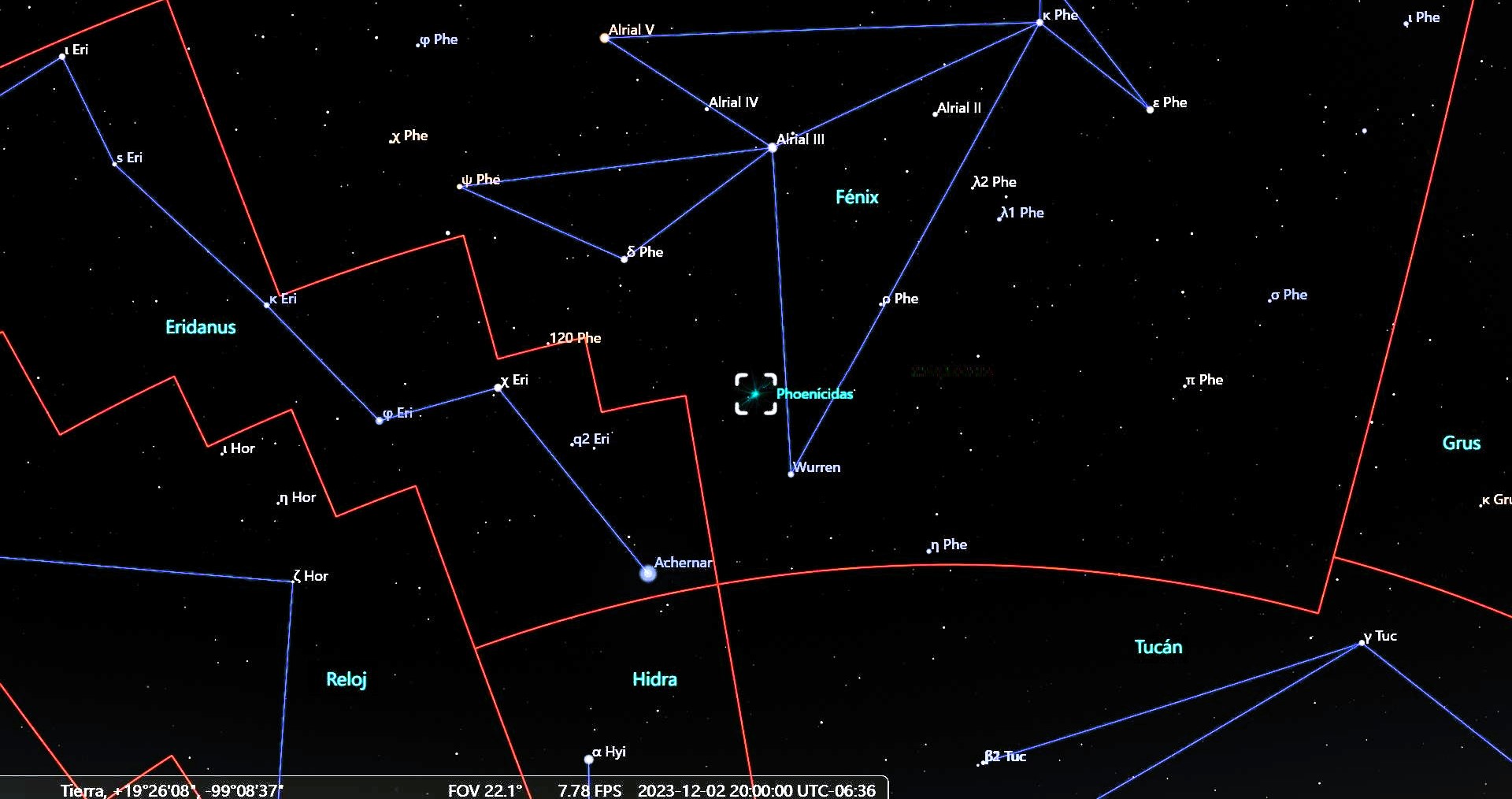
A very maritime rain
Meteor showers happen when the Earth, in its journey around the Sun, crosses paths with the debris left by the trails of some comets and asteroids. In this case, we locate the radiant of the Pupid-Velid meteor shower between two constellations, one that evokes a ship, Puppis (the Popa), and the Sail. Let us remember that the radiant of a meteor shower is nothing more than the celestial point from which the bright trajectories of the meteors seem to begin.
The Pupid-Velids are active from November 30 to December 15, with the maximum on December 7, during the first hours of the day, observing a maximum rate of 10 meteors per hour, in the direction of the constellations of Vela and La Vela. Stern, towards the southeastern part of the celestial sphere. The celestial object responsible for causing this shower has not been identified.
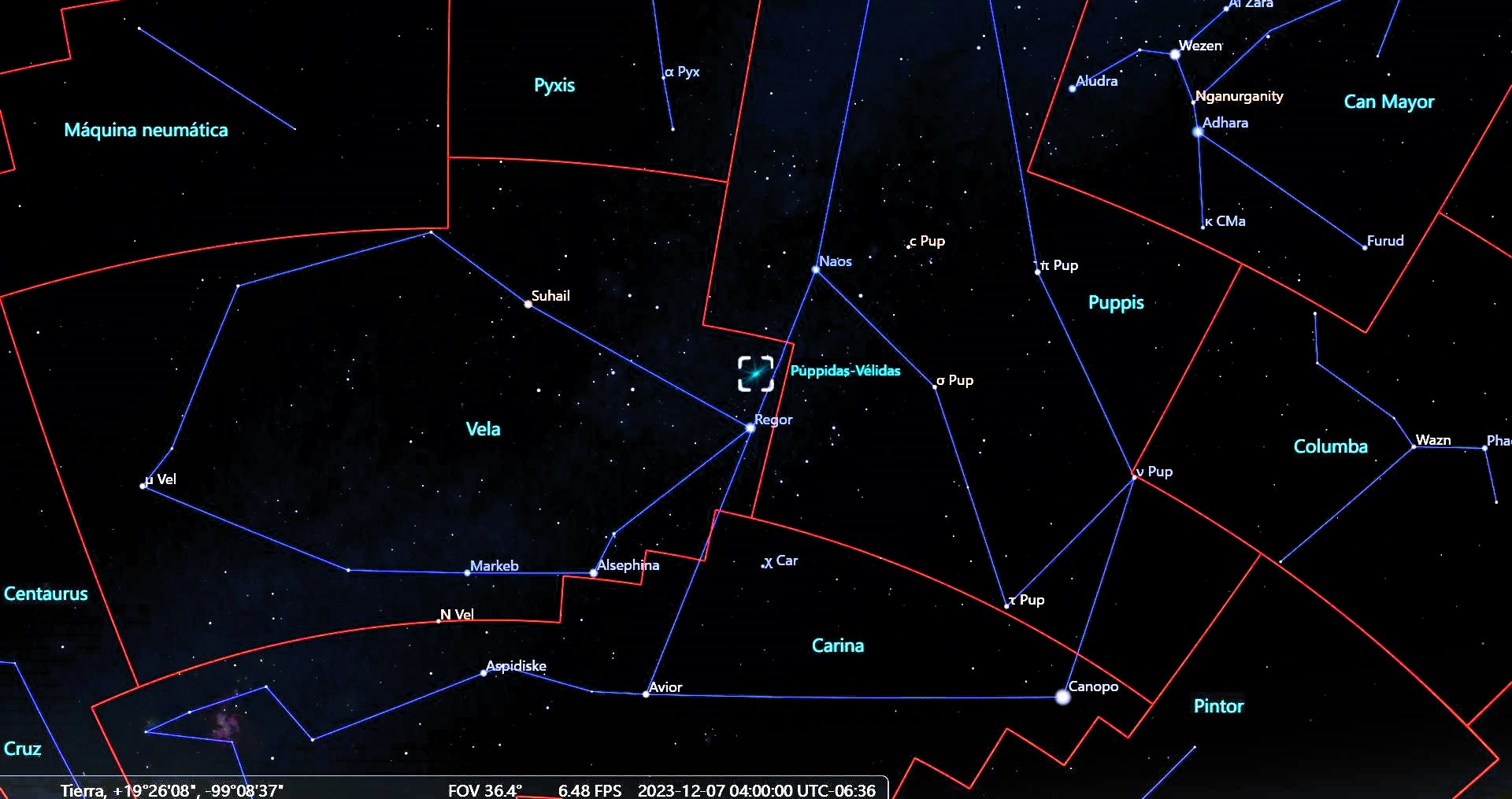
Meteor, meteorite or meteoroid?
Meteor showers are caused by debris from some minor bodies in the solar system, such as comets and asteroids, but what is the difference between a meteor, a meteorite, or a meteoroid? A meteor is the luminous phenomenon that is produced by the ionization of the air when meteoroids are attracted by the Earth's gravity and come into contact with the atmosphere. Meteorites are precisely these fragments of comets or asteroids that impact the Earth's surface, and meteoroids are the fragments that are still located outside the Earth's atmosphere.
Some of the most abundant meteor showers are the Geminids, which are active between December 4 and 17, with a maximum in the early morning of December 14. Its maximum observable rate is 120 meteors per hour, in the direction of the Gemini constellation, towards the northeastern part of the celestial sphere. The origin of the shower is the asteroid (3200) Phaeton.
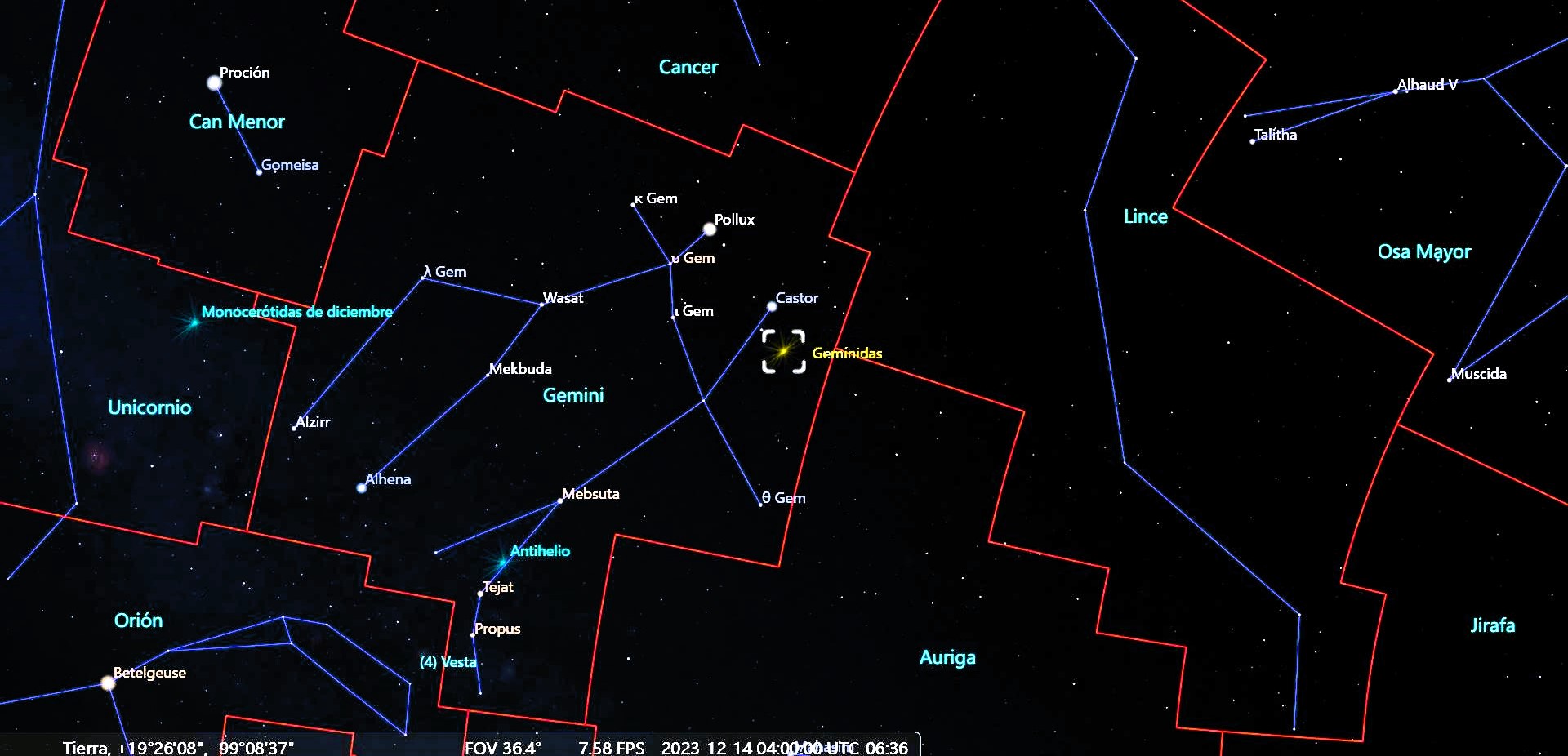
The last rain of the year 2023
The Ursid meteor shower will be active between December 17 and 26, with a maximum on December 22. The maximum observable rate will be 10 meteors per hour, in the direction of the constellation Ursa Minor. Comet 8P/Tuttle is responsible for this shower. It will be visible in the early morning of December 22, towards the northern part of the celestial sphere. To observe this, or any other meteor shower, you just need a good sky, clear horizons, lying on your back and being comfortable, and finally, a lot of patience, try to wear warm clothes, coffee, good music and maybe a cot. Remember that no auxiliary optical instrument is required.
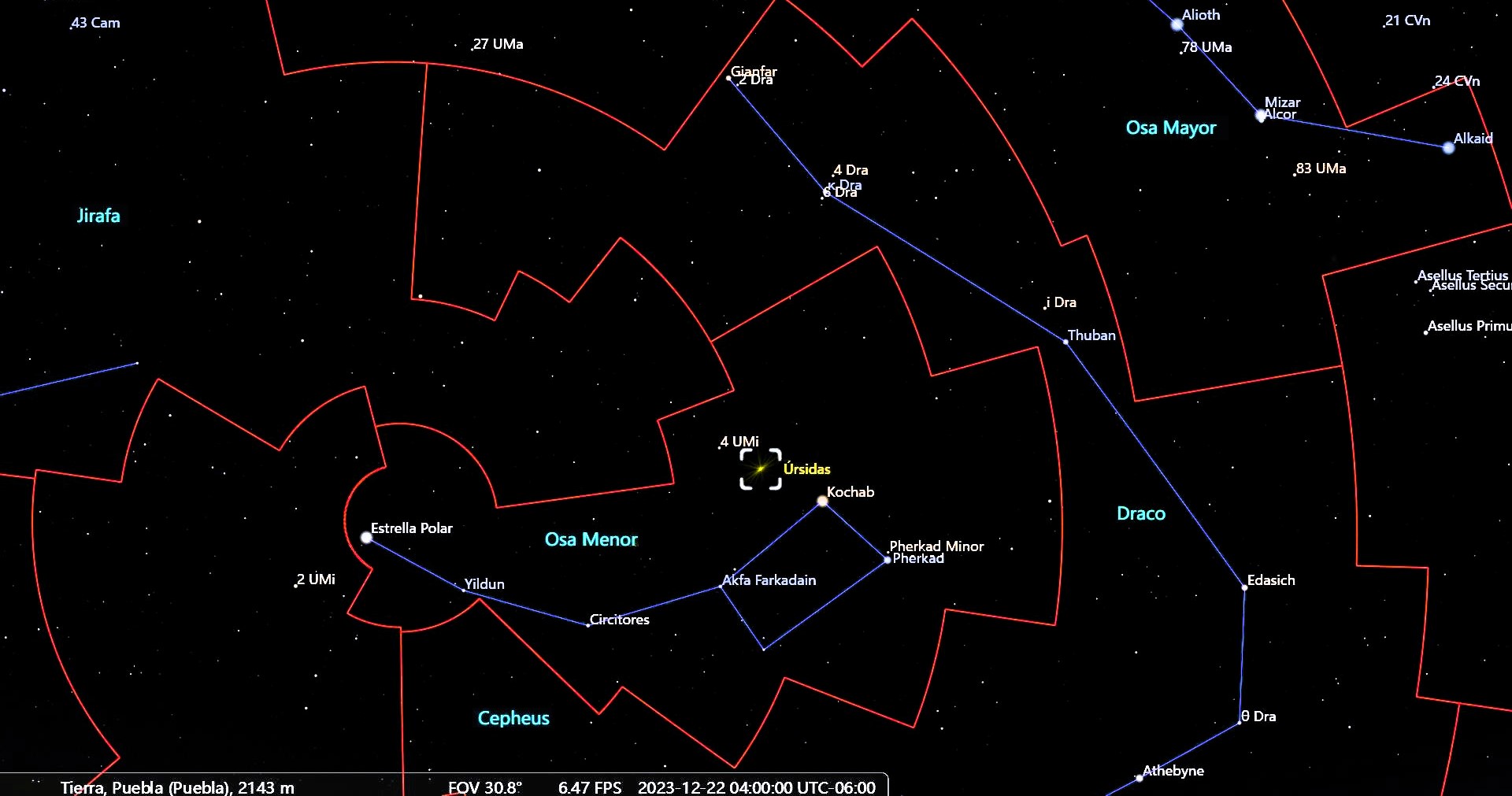
In the heart of Can Major
Located in the constellation Canis Major, the open cluster M 41, NGC 2287 or Little Beehive Cluster, is more or less easy to find; can be seen with the naked eye in dark skies. It is believed that Aristotle observed it around 325 BC, later it was rediscovered by Giovanni Batista Hodiema in 1654; John Flamsteed in 1712; La Gentil in 1749, and finally, cataloged by Charles Messier as M 41 in 1765.
This cluster is made up of approximately a hundred stars with a circular arrangement, located 2,300 light years from us, they have an estimated age between 190 and 240 million years and a size considered to be 25 light years or an angular diameter close to 40 minutes. of Arc. Finding M 41 is not very complicated, due to its magnitude of 4.5, with binoculars or a small telescope it can be achieved, you just have to identify the brightest star in the sky, Sirius, and moving a little to the south, about four degrees, that is, approximately, a standard field of view of binoculars, almost a field of view of the average finderscope of a telescope or 2 thumbs of the hands horizontally, with the arm extended. Luck!
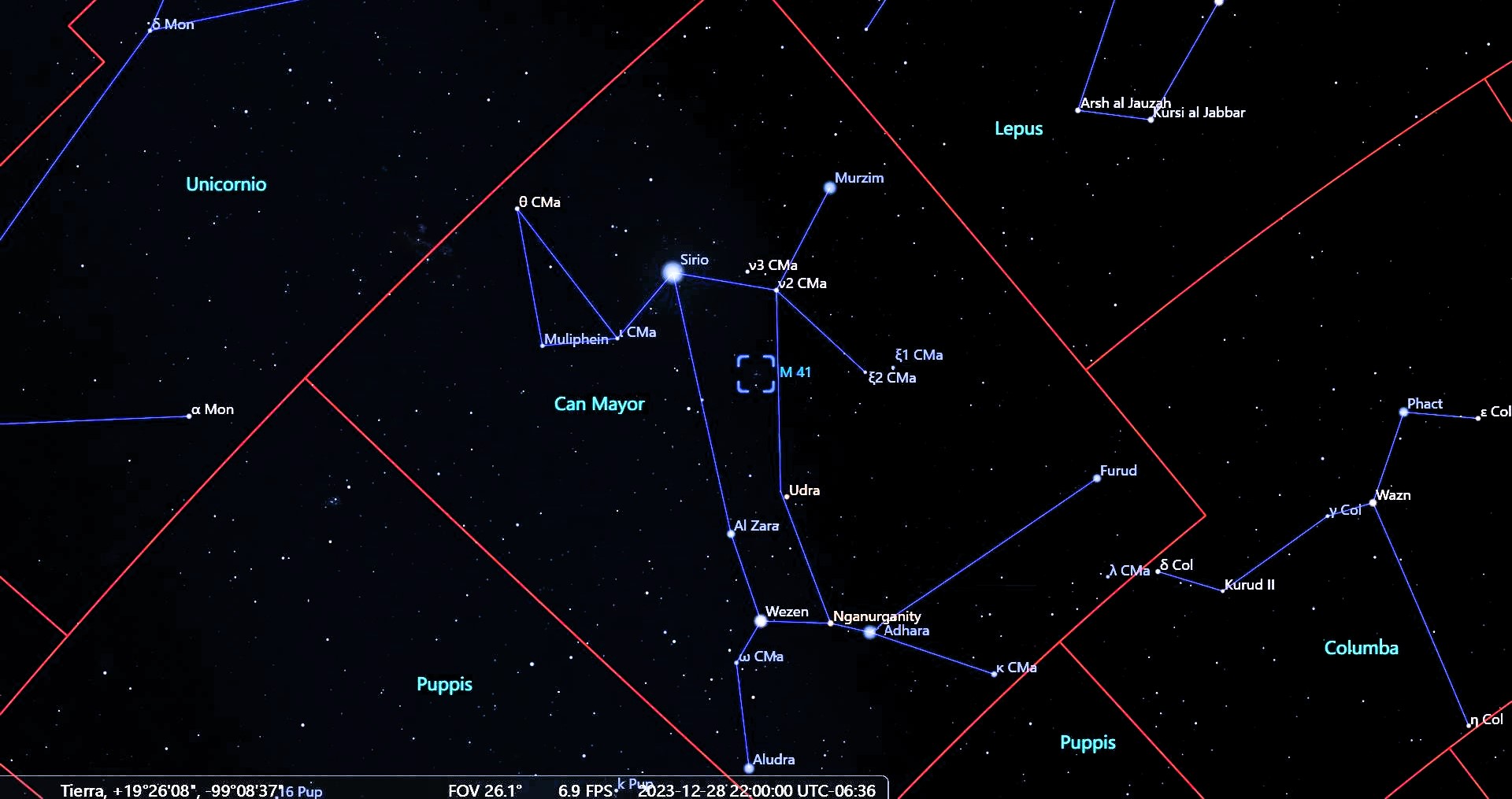
Phases of the Moon
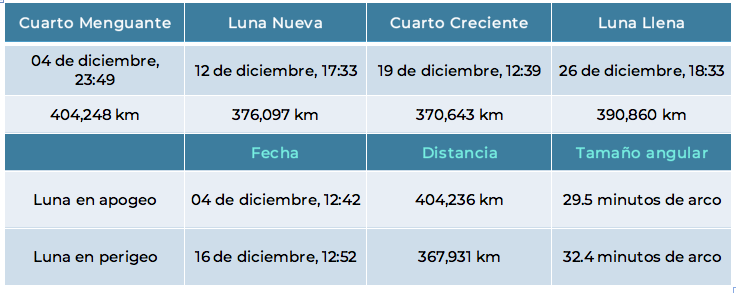
Contacts:
Dr. Agustín Márquez Limón (amarquez@inaoep.mx), Coordinación de Astrofísica-INAOE
M. C. Tania Martínez (astronomiaplanetariokayok@gmail.com), Red de Planetarios del Estado de Quintana Roo
Dr. Raúl Mújica García, (rmujica@inaoep.mx), Coordinación de Astrofísica-INAOE y Noche de las Estrellas
Luis Enrique Erro # 1, Tonantzintla, Puebla, México, Código Postal 72840, Tel: (222) 266.31.00, difusion@inaoep.mx
This work is licensed under a Creative Commons Attribution-NonCommercial-NoDerivs 2.5 Mexico License.


